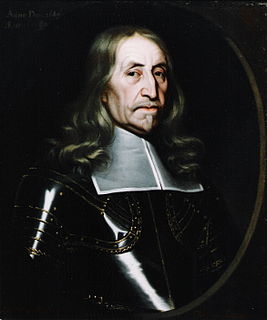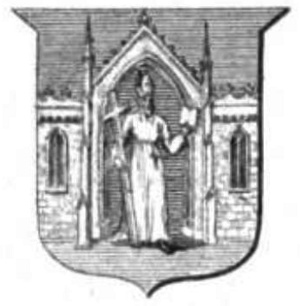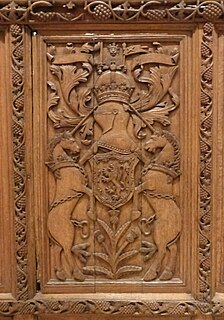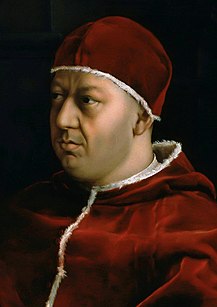William Gordon was a 16th-century Scottish noble and prelate, the last of the pre-Reformation bishops of Aberdeen owing allegiance to the Roman Catholic Church.
Ingram Lindsay [Ingeram de Lindesay], Doctor in Canon Law, was a 15th-century Scottish cleric. Despite being of illegitimate birth - one of several sons of an unmarried nobleman and an unmarried girl - he nevertheless managed in the end to pursue a successful ecclesiastical career.

Henry de Lichton [de Lychtone, Leighton] was a medieval Scottish prelate and diplomat, who, serving as Bishop of Moray (1414–1422) and Bishop of Aberdeen (1422–1440), became a significant patron of the church, a cathedral builder, and a writer. He also served King James I of Scotland as a diplomat in England, France, and Italy.
Alexander de Kininmund was a 14th-century Scottish churchman. The first mention of Alexander occurs when, as a canon of Dunkeld he is one of three ambassadors sent by King Robert I of Scotland to Avignon in 1320. The purpose of this embassy was to present a letter to Pope John XXII known as the Declaration of Arbroath. As a papal chaplain and lawyer, he was well qualified to argue the Scottish cause, and Barrow makes a strong case that he was, in fact the author of the document.

John de Innes was medieval Scottish churchman. Born probably in Moray, he went to France in his youth, receiving a bachelorate in civil law from the University of Paris by 1396 and in canon law by 1407. His education was partly paid for by the prebend of Duffus and a grant from Alexander Bur, Bishop of Moray, taken by Bur from the judicial profits of his diocese. During Innes' study period, he was also pursuing an ecclesiastical career, being Archdeacon of Caithness from 1396 until 1398, and Dean of Ross, from some point between 1396 and 1398 until 1407.
Richard de Potton [de Poiton, de Pottock, de Poito] was a 13th-century English bishop. His name was likely derived his name from the town of Potton in Bedfordshire, England.
Peter de Ramsay [Ramsey] was a 13th-century cleric based in Scotland. His background and origins are obscure. He was the son of a "cleric in minor orders" and an unmarried girl and, according to John of Fordun, he was of "noble birth". He was probably the son of Ness de Ramsey, a baron of Fife.
Radulf de Lamley [Ralph, Ranulf, Randalph de Lambley] was a 13th-century monk and cleric. Radulf's youth is obscure, and it is not until the 1220s that he emerges in the sources as a Tironensian monk, now Abbot of Arbroath. He held the leadership of Arbroath Abbey until 1239, when he was chosen to succeed Gilbert de Stirling as Bishop of Aberdeen.
Gilbert de Stirling was an early 13th-century bishop of Scotland. His background is unclear, perhaps coming from a burgess family of Stirling; he emerges in 1228 as the newly elected Bishop of Aberdeen, succeeding the recently deceased Adam de Kalder, after Matthew the Scot had turned down his own election in order to become Bishop of Dunkeld.
William Stewart was a late medieval Scottish prelate. Born around 1490 in Glasgow, he was the son of Thomas Stewart of Minto. Details about his early life are obscure, but it is known that he attended the University of Glasgow before travelling to continental Europe to study theology and canon law. The first benefice he held was the parsonage of Lochmaben, which he was in possession of by July 1528. In the same year he became rector of Ayr, while he had received crown presentation as Provost of Lincluden Collegiate Church in July 1529, a post he would hold along with his new position as Lord High Treasurer of Scotland.
Robert Forman was a late medieval Scottish churchman. He was the son of one Janet Blackadder and her husband, a Berwickshire landowner named Nicholas Forman of Hatton. Sometime before 11 February 1500, he was made Precentor of Glasgow. He was Dean of Glasgow from 1505, a position he would hold until his death. Between 1506 and 1511 he was also in possession of the Chancellorship of the diocese of Moray.
Adam de Kald [de Kalder, Crail] was an early 13th-century Bishop of Aberdeen. His name, de Kald or de Caral could refer to, among other places, Calder in Nairnshire or Crail in Fife. Either location may mark his origin place, but this is speculation. There is a river in West Yorkshire called Calder. His origins remain obscure.
John was a late 12th century and early 13th century Tironensian monk and bishop. By the time he first appears in the records, as Bishop-elect of Aberdeen in December 1199, he was the prior of Kelso Abbey, that is, deputy to the Abbot of Kelso. He achieved consecration as Bishop of Aberdeen by 20 June 1200, though the date on which this took place is unknown.
Edward [Ēadweard, Eadward, Édouard, Étbard] was a 12th-century prelate based in Scotland. He occurs in the records for the first time as Bishop of Aberdeen in a document datable to some point between 1147 and 1151. His immediate predecessor, as far as the records are concerned, was Bishop Nechtán. The latter can be shown to have been active at least between 1131 and 1132, and possibly as late as 1137. Edward's accession must have occurred, then, sometime between 1131 and 1151, with a date after the 1130s more likely than not.
William de Spynie was a Scottish prelate. He was a canon of Moray by 1363 and Precentor (Chanter) of Aberdeen in 1371. By 1372 x 1373, he had exchanged the latter position with William Boyl for the Precentorship of Moray. He had become Dean of Aberdeen by 1388. It is possible he had become Dean of Dunkeld in 1397, though this may be a mistake in the source, "Aberdeen" rather than "Dunkeld" being meant. At any rate, in that year he was elected as the Bishop of Moray. He travelled to France and on September 1397 was consecrated as Bishop.
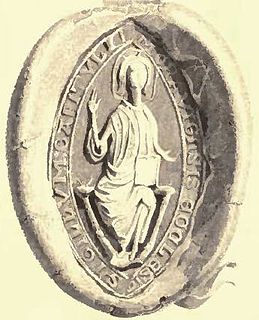
Andrew Stewart was a 15th-century Scottish prelate and administrator.
Thomas Vaus [de Vaus, Vause] was a 15th-century Scottish royal official and cleric. He was a graduate of the University of Paris, being admitted there as a Bachelor ad eundem in 1445, graduating as a Licentiate in 1447. At some stage he completed an M.A., and bore the title of "Master". His brother Martin Vaus, later Dean of Ross, was at Paris with him. He became Keeper of the Privy Seal of Scotland and secretary of King James II of Scotland.
Adam de Darlington [Derlingtun] was a 13th-century English churchman based in the Kingdom of Scotland. Adam's name occurred for the first time in a Moray document datable between 1255 and 1271, where he was named as the Precentor of Fortrose Cathedral. He seems to have been introduced into the diocese of Ross, along with others from the north-east of England, by Bishop Robert de Fyvie, who may have been descended from the area.
Alexander de Kylwos – written alternatively as Frylquhous, Kylquos, and a variety of other forms – was a Scottish churchman and prelate active in the second half of the 14th century. He is known to have held senior positions in three bishoprics, and senior offices in two, before being elected and appointed Bishop of Ross in 1371. Though his episcopate is relatively obscure, he seems to have spent almost all of it inside or around his province, was closely associated with William III and Euphemia I, successive rulers of Ross, and was an associate of the famous Alexander Bur, Bishop of Moray, during the latter's struggle with Alexander Stewart, the son of the King later known by the nickname "Wolf of Badenoch".

